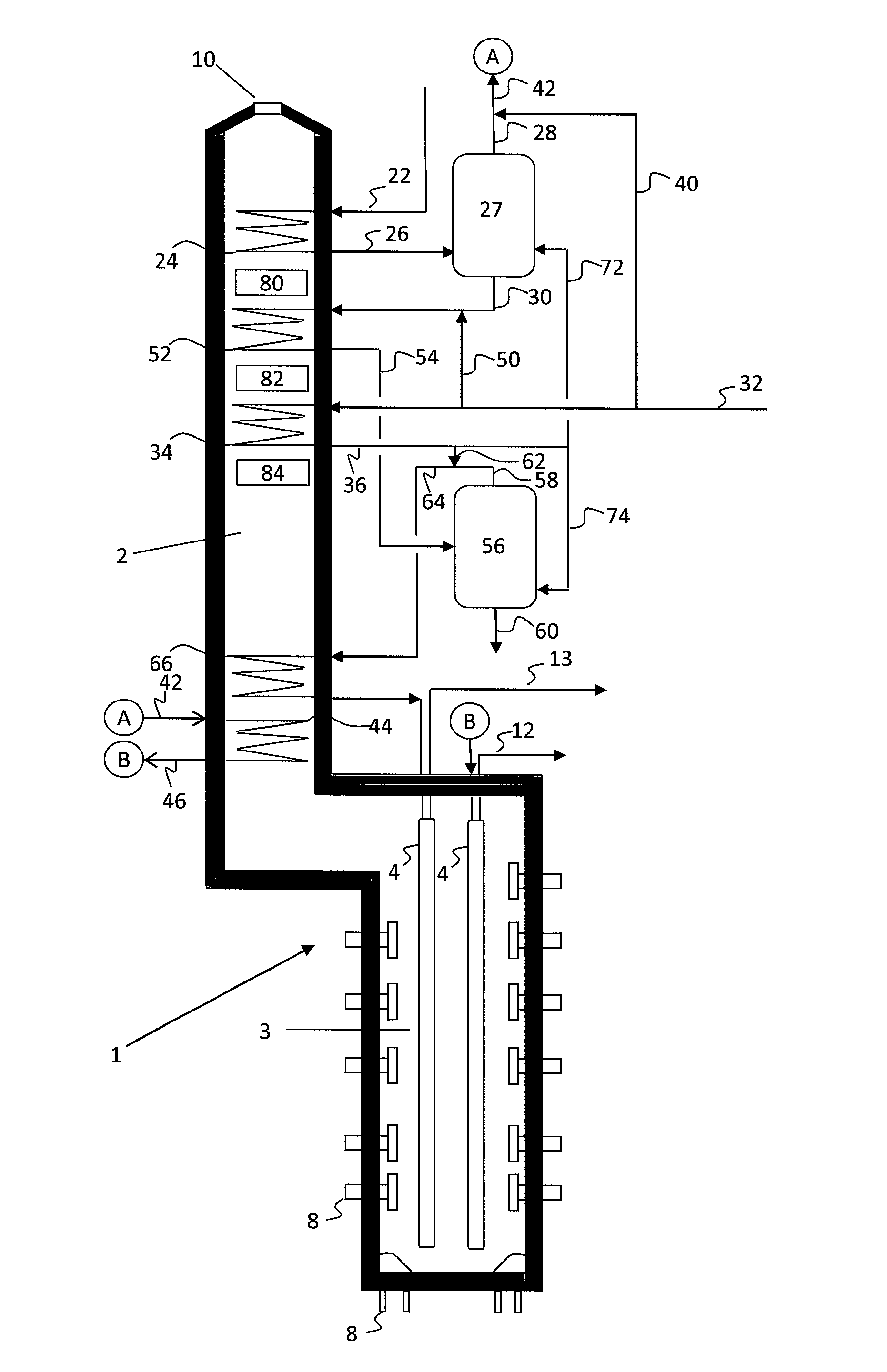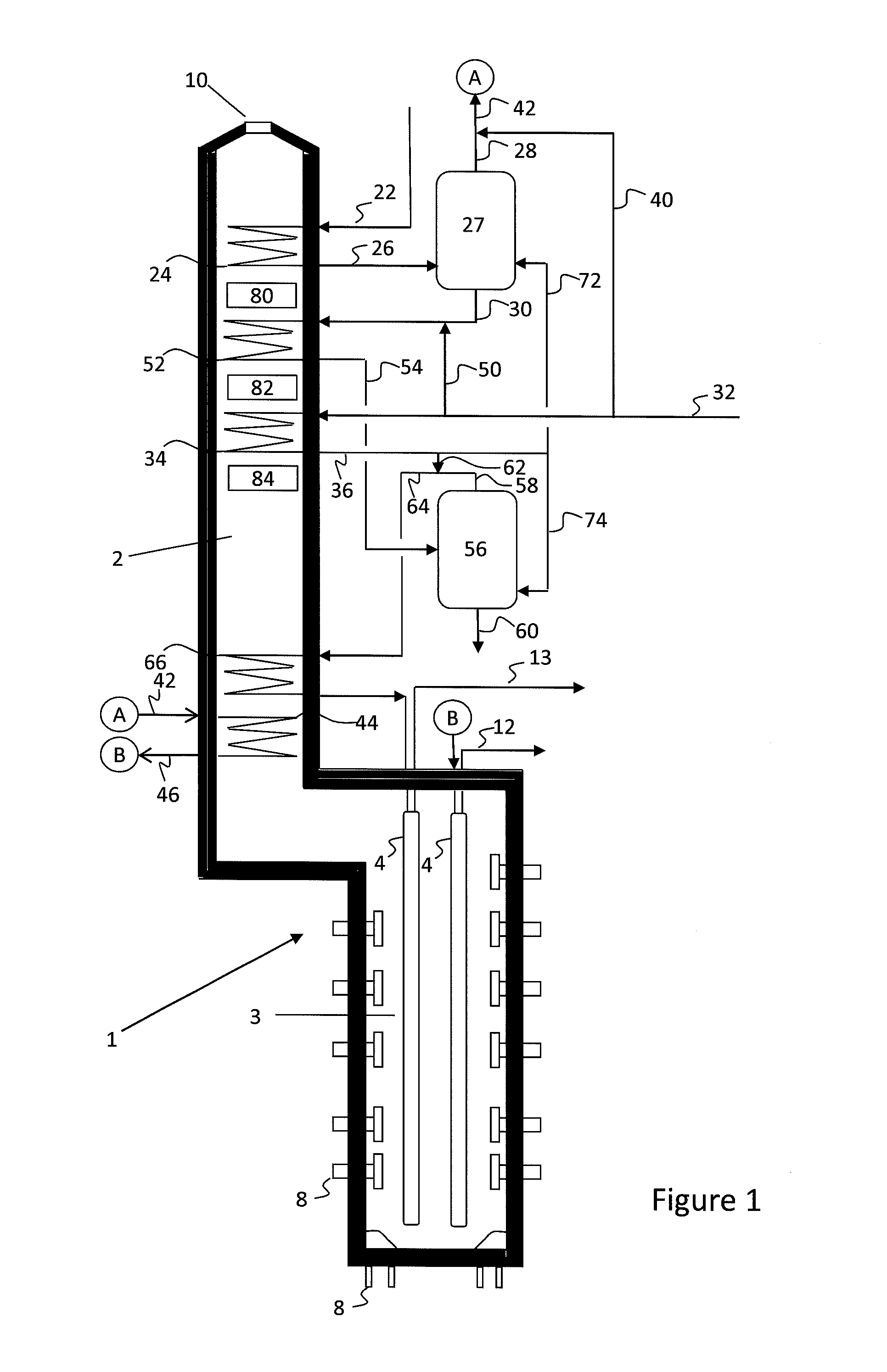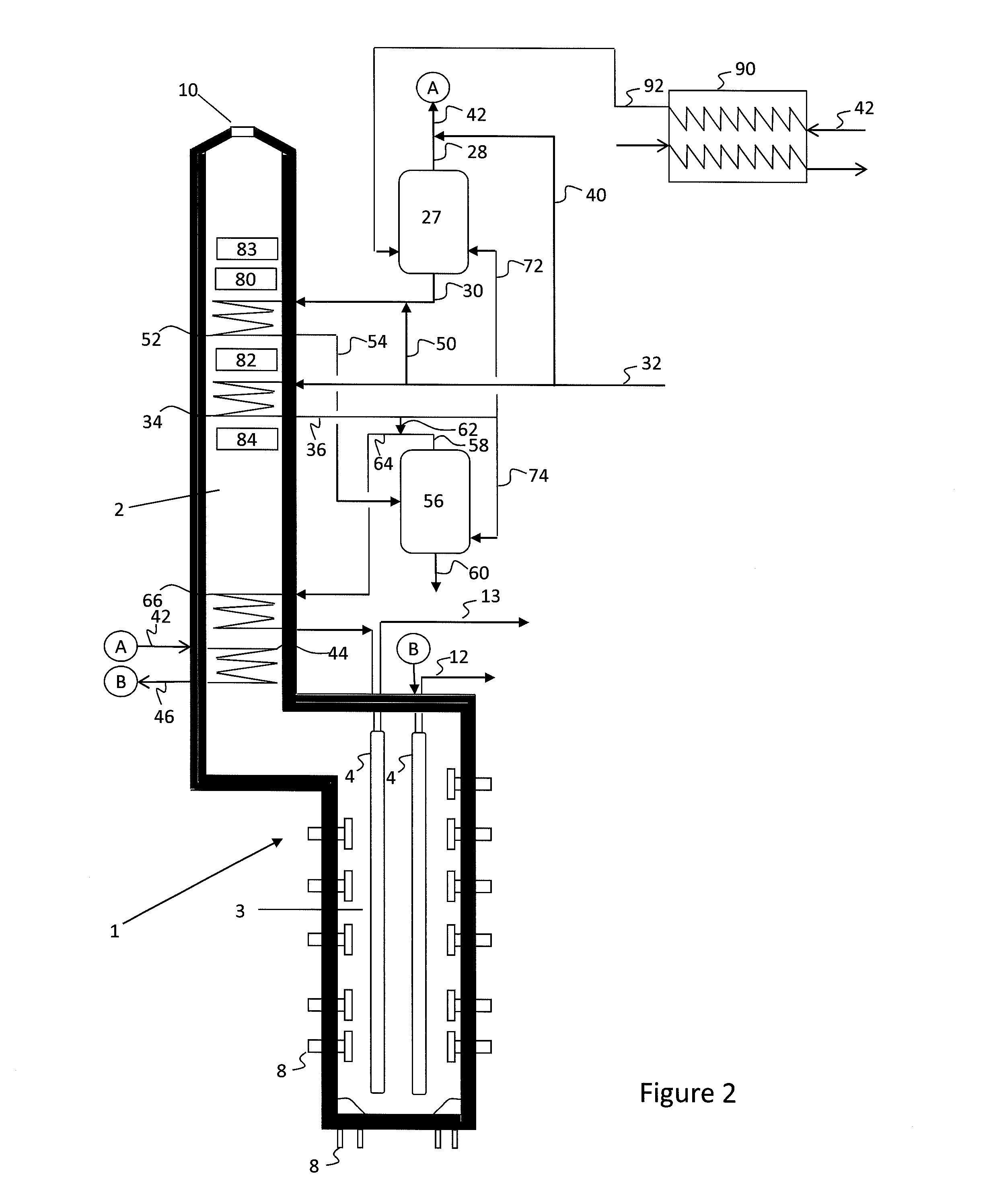Thermal cracking of crudes and heavy feeds to produce olefins in pyrolysis reactor
a pyrolysis reactor and crude feed technology, applied in the direction of thermal non-catalytic cracking, chemical/physical/physicochemical processes, organic chemistry, etc., can solve the problems of significant yield loss, and achieve the effect of reducing coking and fouling, and reducing capital and energy requirements
- Summary
- Abstract
- Description
- Claims
- Application Information
AI Technical Summary
Benefits of technology
Problems solved by technology
Method used
Image
Examples
example 1
Arabian Crude
[0068]Table 1 shows the calculated yields obtained for crude cracking. All calculations are based on a theoretical model. Assuming run length (even few hours) is not a factor, yields at high severity are shown (Case 1) for light Arabian crude. The whole crude is cracked. The TBP distillation curve of the light Arabian crude is shown in FIG. 5. The crude gravity is 0.8581.
[0069]In Case 2, the crude is cut into three fractions according to embodiments herein, including an Initial Boiling Point to 225° C. cut, a 225° C. to 550° C. cut, and a 550° C.+ cut, as described above. Each fraction is then cracked separately.
[0070]Case 3 is a simple approach, where the complete crude is vaporized with added steam (i.e., no vapor / liquid separation). For the 1-cut calculations (Case 3), 550° C.+ material is removed.
[0071]As shown in Table 1, embodiments herein may result in increased olefin production with lower steam consumption.
TABLE 1Case123FEEDCrude3 Cuts1 CutSpecific0.85810.85431...
example 2
Agbami Crude (Nigeria)
[0072]Similar comparisons to those in Example 1 are made for Agbami crude from Nigeria. The crude had the properties and distillation curve as shown in Table 2.
TABLE 2API Gravity42.3Sulfur, wt %0.04MCRT, wt %0.67Va + Ni, ppm2.1TBP Distillation° C. 5 vol %0.410 vol %5830 vol %13350 vol %21070 vol %29190 vol %40295 vol %452Residue (570° C.+)1.7%
[0073]Pyrolysis yields for cracking the crude, calculated based on a theoretical model similar to that used in Example 1, are shown in Table 2. Four cases were studied for this example, including whole crude, 1-cut, 2-cuts, and 3-cuts.
[0074]In the 1-cut case, 530° C.+ material is removed. This residue is about 4 wt % of the crude. For the 2-cut case, the naphtha (up to 200° C.) material is cracked in a separate coil and the remainder (up to 530° C.) is cracked in another coil or heater. For the 3-cut case, naphtha, AGO (200° C. to 350° C.), and VGO (350° C. to 530° C.) are cracked in separate coils or heaters. For all case...
PUM
| Property | Measurement | Unit |
|---|---|---|
| boiling point | aaaaa | aaaaa |
| temperature | aaaaa | aaaaa |
| end boiling point | aaaaa | aaaaa |
Abstract
Description
Claims
Application Information
 Login to View More
Login to View More - R&D
- Intellectual Property
- Life Sciences
- Materials
- Tech Scout
- Unparalleled Data Quality
- Higher Quality Content
- 60% Fewer Hallucinations
Browse by: Latest US Patents, China's latest patents, Technical Efficacy Thesaurus, Application Domain, Technology Topic, Popular Technical Reports.
© 2025 PatSnap. All rights reserved.Legal|Privacy policy|Modern Slavery Act Transparency Statement|Sitemap|About US| Contact US: help@patsnap.com



